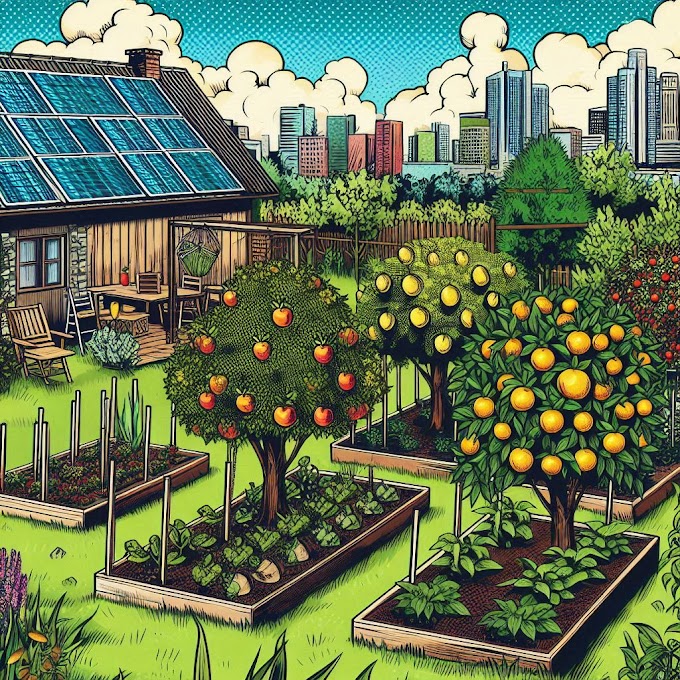Fastest Growing Survival Foods: Quick-Growing Crops for Backyard Resilience

In times of uncertainty, having access to fast-growing survival foods can be crucial for ensuring food security and resilience. By cultivating quick-growing crops in your backyard, you can quickly replenish your food supply and sustain yourself and your family with fresh, nutritious produce.
In this article, we'll explore some of the fastest-growing survival foods to grow in your backyard, along with tips for successful cultivation and harvest.
1. Leafy Greens:
- Lettuce: Lettuce is one of the fastest-growing salad greens, with some varieties ready for harvest in as little as 3 to 4 weeks after planting. Choose loose-leaf or cut-and-come-again varieties for continuous harvests throughout the growing season.
- Spinach: Spinach is another rapid-growing leafy green that thrives in cool weather. Baby spinach leaves can be harvested just a few weeks after planting, while mature leaves can be picked as needed for salads, smoothies, and cooked dishes.
- Arugula: Arugula is a peppery salad green that grows quickly and can be harvested as baby greens in as little as 3 weeks. It's tolerant of cool temperatures and can be grown year-round in many climates.
2. Radishes:
- Radishes: Radishes are one of the fastest-growing root vegetables, maturing in as little as 3 to 4 weeks after planting. They're easy to grow from seed and can be sown directly in the garden or in containers for a quick harvest of crunchy, spicy roots.
3. Microgreens:
- Microgreens: Microgreens are young, tender greens harvested at the cotyledon or first true leaf stage. Many varieties, including arugula, kale, radish, and mustard, can be ready for harvest in as little as 7 to 14 days after sowing. They're packed with nutrients and can be used to add flavor, texture, and color to salads, sandwiches, and other dishes.
4. Herbs:
- Basil: Basil is a fast-growing herb that thrives in warm, sunny conditions. It can be harvested as soon as the plants have several sets of leaves, usually within 4 to 6 weeks after planting. Harvest leaves as needed for fresh pesto, sauces, salads, and garnishes.
- Cilantro: Cilantro is a quick-growing herb commonly used in Mexican, Asian, and Middle Eastern cuisines. It can be harvested as soon as the plants reach 6 to 8 inches tall, typically within 3 to 4 weeks after planting. Use fresh cilantro leaves and stems in salsas, salads, curries, and soups.
5. Green Onions:
- Green Onions: Green onions, also known as scallions or spring onions, are fast-growing members of the onion family. They can be harvested when the tops reach 6 to 8 inches tall, usually within 3 to 4 weeks after planting. Use green onions as a flavorful garnish for salads, soups, stir-fries, and grilled dishes.
6. Bush Beans:
- Bush Beans: Bush beans are quick-growing, prolific producers that can be harvested in as little as 50 to 60 days after planting. Choose bush varieties such as 'Provider' or 'Contender' for compact plants and high yields of tender, flavorful pods.
7. Peas:
- Peas: Peas are cool-season vegetables that grow quickly and produce an abundant harvest of sweet, crisp pods. Dwarf or bush pea varieties can be ready for harvest in as little as 55 to 70 days after planting, while climbing or vining varieties may take slightly longer.
Tips for Successful Cultivation:
1. Choose Quick-Growing Varieties:
Select varieties of vegetables and herbs that are known for their fast growth and early maturity to ensure a speedy harvest.
2. Provide Optimal Growing Conditions:
Give your plants the best possible start by providing them with proper soil, sunlight, water, and nutrients. Ensure good drainage and adequate air circulation to prevent disease and promote healthy growth.
3. Start from Seed:
Direct sow seeds in the garden or containers to minimize transplant shock and accelerate growth. Follow spacing and planting depth recommendations on seed packets for best results.
4. Harvest Continuously:
Harvest leafy greens, herbs, and microgreens frequently to encourage new growth and prolong the harvest period. Use a cut-and-come-again approach for salad greens and herbs, harvesting outer leaves or stems while allowing the center of the plant to continue growing.
5. Succession Planting:
Extend your harvest season by planting new crops in succession throughout the growing season. As soon as one crop is harvested, replant the space with a new crop to ensure a continuous supply of fresh produce.
Growing fast-growing survival foods in your backyard is a practical and empowering way to enhance food security, self-sufficiency, and resilience.
By cultivating quick-growing crops such as leafy greens, radishes, microgreens, herbs, beans, and peas, you can quickly replenish your food supply and sustain yourself and your family with fresh, nutritious produce, even in times of uncertainty.
Tips for Growing Fast-Growing Survival Foods:
1. Choose quick-growing varieties of vegetables, herbs, and microgreens for rapid harvests.
2. Provide optimal growing conditions, including proper soil, sunlight, water, and nutrients.
3. Start from seed to minimize transplant shock and accelerate growth.
4. Harvest frequently to encourage new growth and prolong the harvest period.
5. Succession plant to extend your harvest season and ensure a continuous supply of fresh produce.













